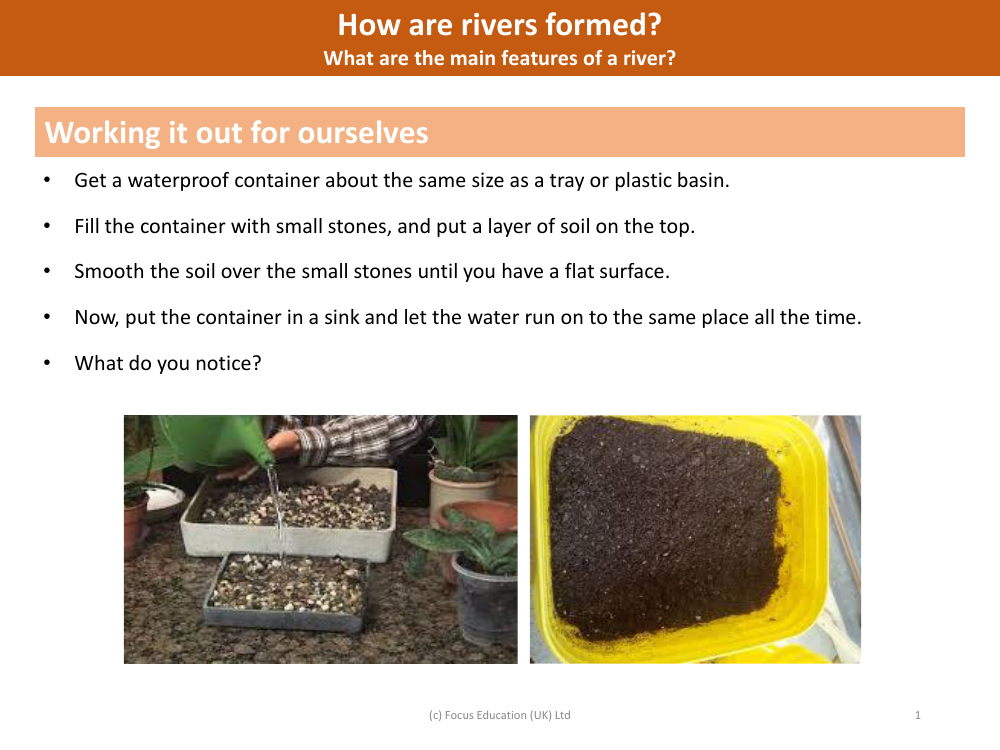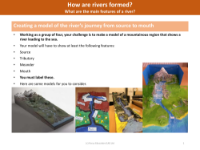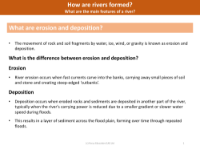Erosion and deposition - Investigation instructions

Geography Resource Description
To explore the processes of erosion and deposition, an investigative activity can be carried out using simple materials. Begin by obtaining a waterproof container, roughly the size of a standard tray or plastic basin. This container is then filled with small stones, creating a base layer. Over these stones, add a layer of soil, spreading it evenly until a flat surface is achieved. This setup is designed to mimic a natural landscape on a miniature scale. Once the preparation is complete, place the container in a sink and gently let water run onto the soil at a consistent spot. Observe the changes that occur as the water interacts with the soil and stones. This experiment prompts questions about the formation of rivers and their main features, providing a hands-on understanding of these geological processes.
Through this investigation, students are encouraged to draw conclusions about how rivers are formed and identify their primary characteristics. As the water continually flows onto the same area of the soil, it simulates the natural action of a river. Students will notice how the water erodes the soil, carrying particles away, and how it deposits these particles elsewhere as the water's energy decreases. This activity serves as a visual representation of erosion and deposition, key elements in the life cycle of a river. Observing these processes in real-time allows students to witness the dynamic nature of rivers and the landscapes they shape.






